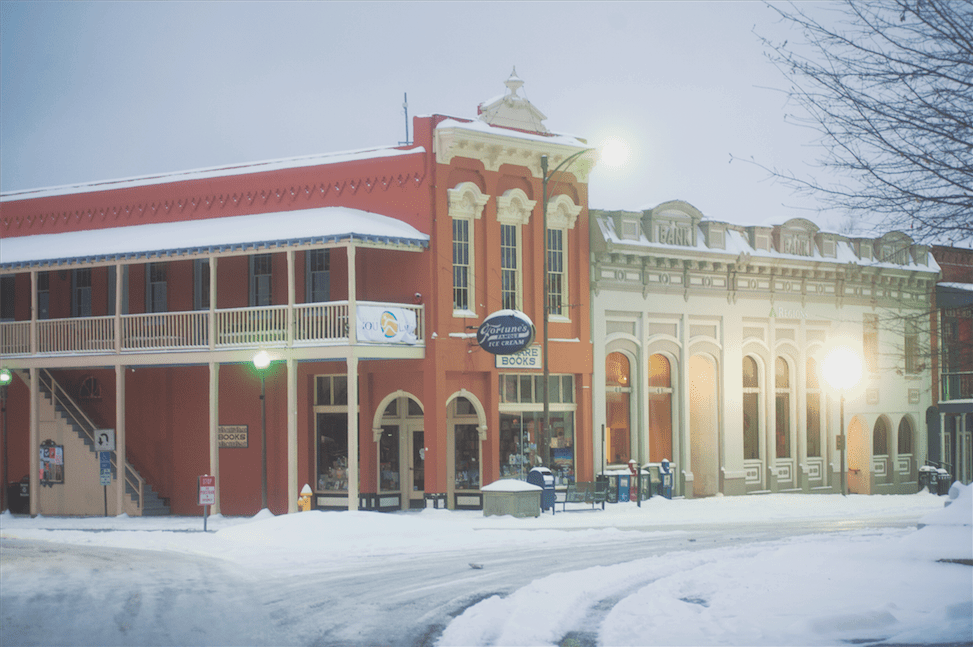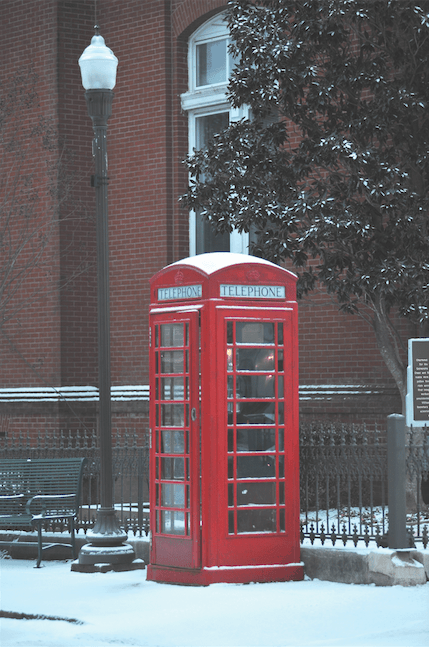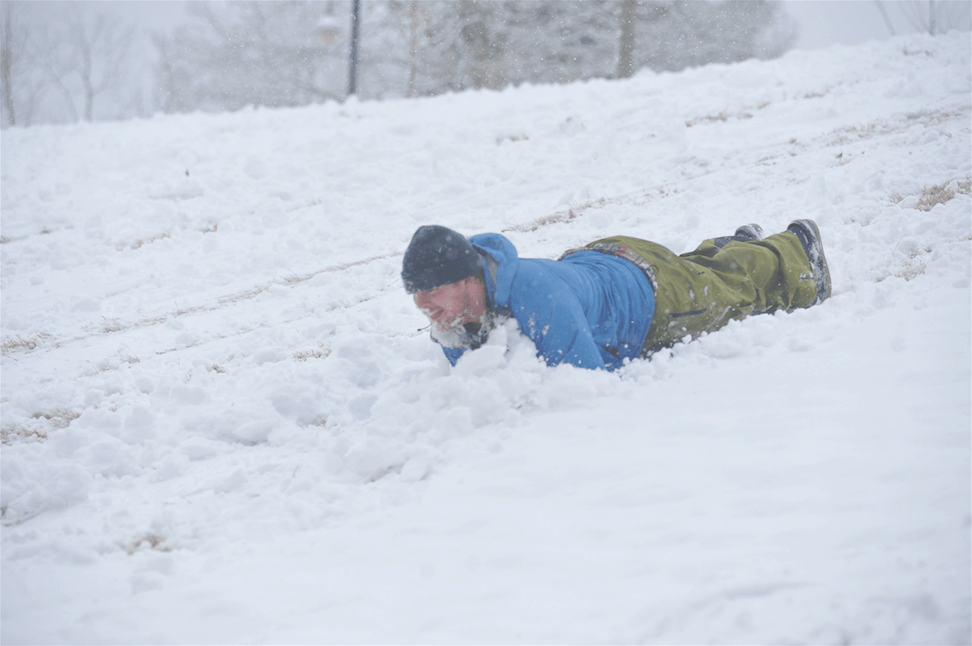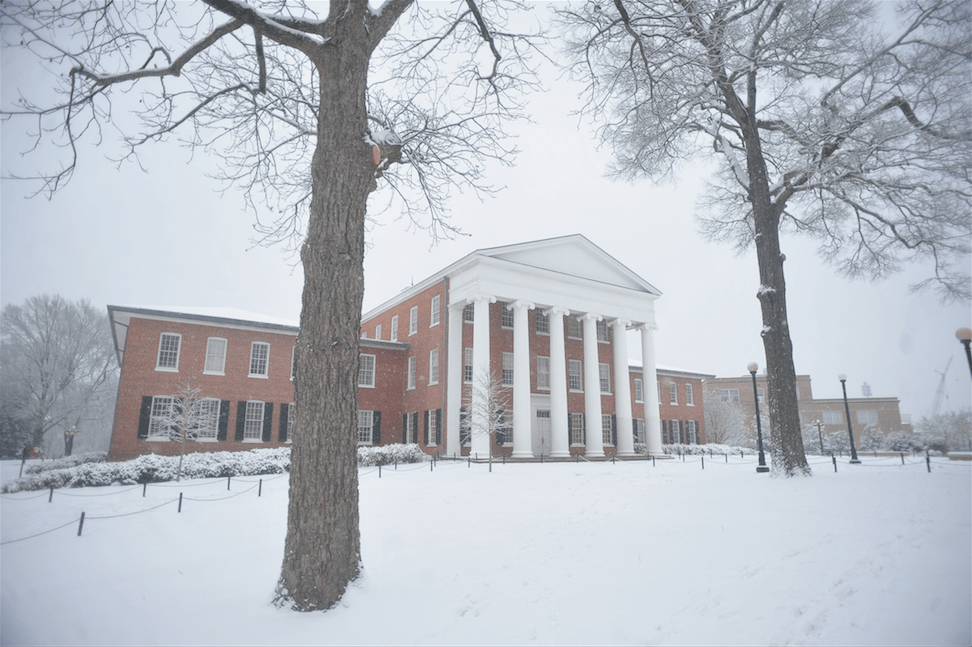
When Oxford Freezes
Like most Southern towns we have a strange and curious history with snow and ice, and some of us are marked indelibly by it.BY DAVID MAGEE
PHOTOS BY BRUCE NEWMAN
Consider two winters ago when it barely got cold all but the most significant snow in several years dropped in late February, closing schools including Ole Miss and filling social media with picture perfect posts. It more than doubled Oxford’s annual snowfall average of 2 inches, which made up for this past winter when only a few flakes fell.

We can expect more of that in the years to come thanks to global warming in general and La Niña in some specific years. A La Niña pattern is expected to control Oxford’s weather this winter, for instance, bringing warmer and drier conditions and less chance for significant snow and ice.
Last winter, for instance, the Rebels parlayed 65 degree days on a mid-February weekend into some 10,000 fans per game in a weekend sweep of East Carolina. Some Swayze Crazies weren’t even wearing shirts. That’s why even snow lovers have to be careful what they wish for in these parts.
No sense ruining good baseball weather.
January is when most snow falls in Oxford, historically, anyway. That’s not saying much, considering January only averages about 1 inch of snow per year. But December typically isn’t cold enough until late, and February benefits from earlier spring conditions meaning that the best chances for snow days and picture-perfect postcards occur in January.
In my four decades of living in Oxford, the big snows have been few and far between, but sometimes we have gotten them in clusters thanks to jet streams dipping deep into the South. One of my earliest memories is a deep snow in the late 1960s. In the 1980s, we saw several significant snow and ice events that completely shut down the town for days.
There was one in the early 80s when an artic temperature plunge followed several inches of snow, turning Oxford streets into a sheet of ice for days. Barely anybody moved on the roads. But one Oxford friend with a driver’s license and his small truck connected a large inner tube to the back of the truck with a rope, pulling friends around town for hours and days of endless, albeit reckless, fun.

And we did.
There was something about those 80s and snow in Oxford. We were also shut down in 1985 by a 5-inch fall that was followed by an arctic plunge, closing the university for days and making streets in town impossible for driving. The same thing happened in the early days of 1988 when a rare system dropped almost a foot of snow from the Arkansas Delta to across North Mississippi in what remains one of the biggest totals on record for our humble hamlet.

The forecast had called for the temperature to reach near 40 degrees that day Oxford’s armageddon of ice occurred. But we had received a coating of ice with a little snow the night before, creating an extraordinary self-cooling effect that perpetuated into disaster. Weather professionals were puzzled, citing the rare event that nobody could forecast.
The heavy rains came, as predicted, but it never warmed up, meaning that the pouring rain became inches of weaponized ice. Trees snapped. Rooftops crumbled. Grown men wept.
We lived just two blocks off the Square on Van Buren Avenue but didn’t have power for more than two weeks, and temperatures for one of those two weeks were frigid. It was more than uncomfortable.
Chaney’s Pharmacy, neighbors joked with a half-smile, had a run on depression pills once Oxford thawed out.
Now, the stories live in Oxford lore, a bad event made less painful by the passage of time. But it remains close enough in memory that when people laugh and joke about how a little bit of snow and ice makes us North Mississippi folks crazy, it can be a bit annoying. They don’t know what we know.
You would have to have been hurled into an ice-covered curb from a speeding inner tube or have slept with no heat in temperatures below 20 degrees for several days in a row to truly understand that, while winter is traditionally mild in North Mississippi, it can periodically throw a devilish punch.








